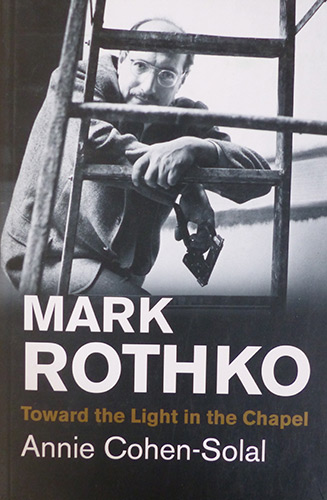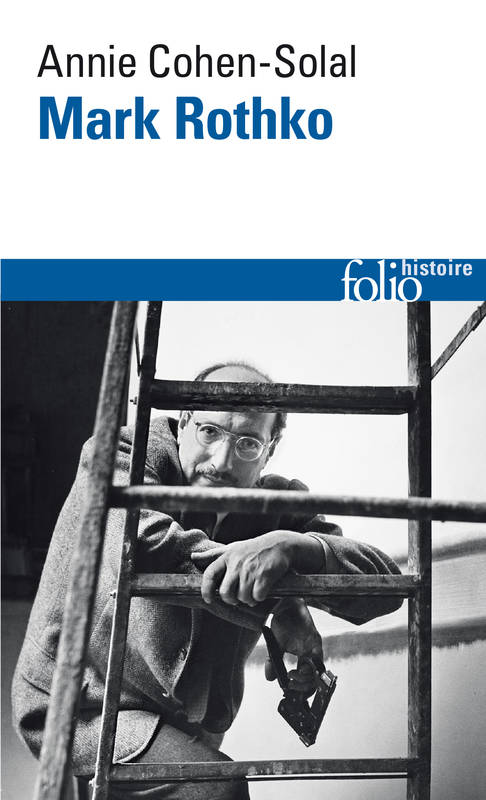
Mark Rothko
Toward the Light in the Chapel
Mark Rothko, one of the greatest painters of the twentieth century, was born in the Jewish Pale of Settlement in 1903. He immigrated to the United States at age ten, taking with him his Talmudic education and his memories of pogroms and persecutions in Russia. His integration into American society began with a series of painful experiences, especially as a student at Yale, where he felt marginalized for his origins and ultimately left the school. The decision to become an artist led him to a new phase in his life. Early in his career, Annie Cohen-Solal writes, “he became a major player in the social struggle of American artists, and his own metamorphosis benefited from the unique transformation of the U.S. art world during this time.” Within a few decades, he had forged his definitive artistic signature, and most critics hailed him as a pioneer. The numerous museum shows that followed in major U.S. and European institutions ensured his celebrity. But this was not enough for Rothko, who continued to innovate. Ever faithful to his habit of confronting the establishment, he devoted the last decade of his life to cultivating his new conception of art as an experience, thanks to the commission of a radical project, the Rothko Chapel in Houston, Texas.
Cohen-Solal’s fascinating biography, based on considerable archival research, tells the unlikely story of how a young immigrant from Dvinsk became a crucial transforming agent of the art world—one whose legacy prevails to this day.
“Illuminating. Sublime.”
The Washington Times
Jewish Lives
March 2015
296 pages
Translations
Press reviews
England
France
ARTICLES
- Le mystère Rothko à la Fondation Louis Vuitton, Le Figaro
- Mark Rothko, Le Journal des Arts
- Ses tableaux parlent une lingue universelle, Le Monde
- Biographie de Mark Rothko: les Pays-Bas à nouveau à feu et à sang, HuffPost
- La vie de Mark Rothko ou la biographie d’une vibration, La République des livres
- Mark Rothko a révolutionné l’acte du regard, Le Quotidien de l’Art
- Selon Rothko, l’artiste a pour mission de réparer le monde, Libération
- Décrypter l’œuvre de Rothko, L’oeil
- Mark Rothko – L’homme lumière, Beaux Arts Magazine
- Mark Rothko Des visions qui prennent formes, Libération
- L’itinéraire artistique de Mark Rothko, Nonfiction
ONLINE INTERVIEWS
RADIO INTERVIEWS
- Le Tiqoun ‘Olam de Mark Rothko 1/2 Du Héder de Dvinsk aux États-Unis d’Amérique, Radio France, France Culture
- Le Tiqoun ‘Olam de Mark Rothko 2/2 Au coeur de la chapelle, Radio France, France Culture
- Mark Rothko et Nicolas de Staël : donner forme aux couleurs, Radio France, France Culture
- Mark Rothko, le peintre qui ne souriait jamais, Radio France, France Culture
- Mark Rothko, Radio France
- Annie Cohen-Solal, RFI
CONFERENCES
Spain
United States
ARTICLES
- The Fire Was Not Consumed, The Wall Street journal
- Mark Rothko: Toward the Light in the Chapel, The New York Times
- “Mark Rothko: Toward the Light in the Chapel” Review, The Washington Times
- A Newish Biography of Mark Rothko, L.A. Review of books
- ‘Mark Rothko: Toward the Light in the Chapel,’ by Annie Cohen-Solal, The Washington Post
- Mark Rothko: Toward the Light in the Chapel, The world university rankings
- Why Mark Rothko Dropped Out of Yale, Tablet
- Mark Rothko: Crossing the Boundaries, The Judy chronicles
- Mark Rothko: Toward the Light in the Chapel, Publishers Weekly
- Annie Cohen-Solal on ‘Mark Rothko: Toward the Light in the Chapel’, The Martha’s Vineyard Times
RADIO INTERVIEWS
CONFERENCES







